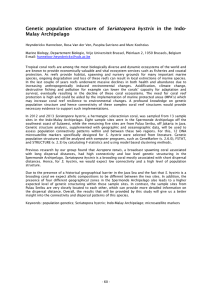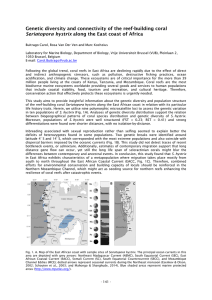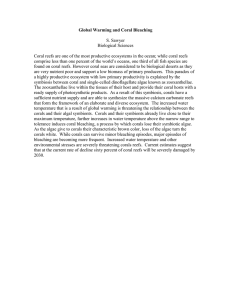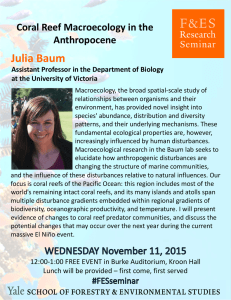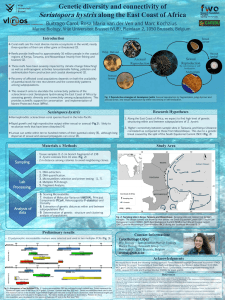Acropora tenuis Seriatopora hystrix
advertisement
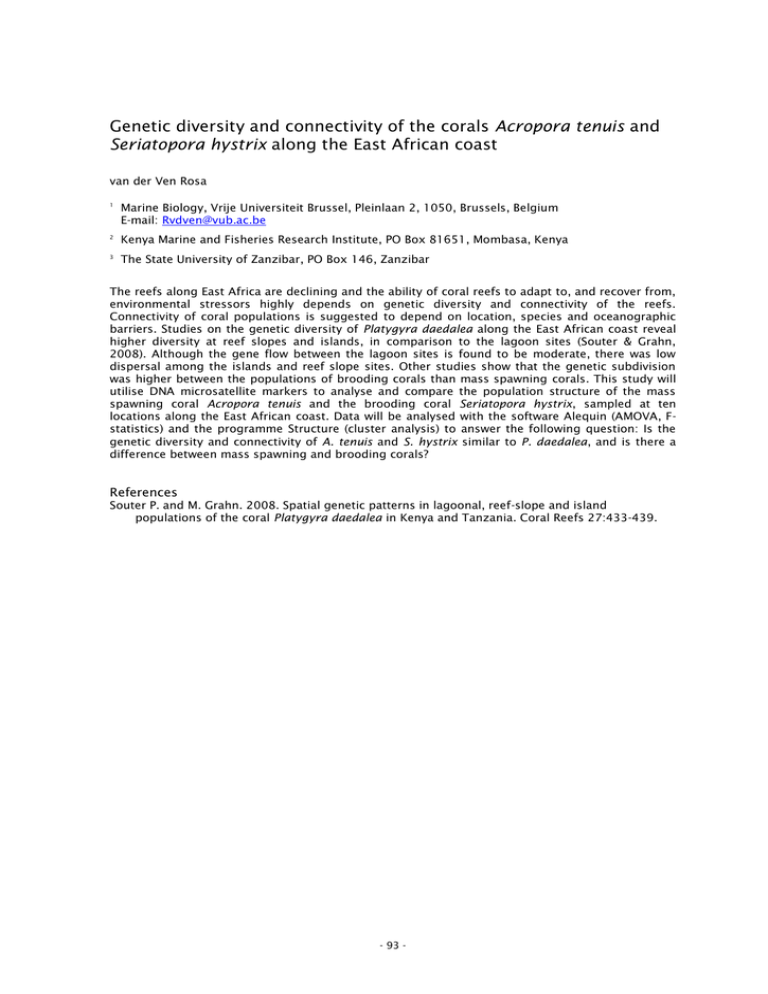
Genetic diversity and connectivity of the corals Acropora tenuis and Seriatopora hystrix along the East African coast van der Ven Rosa 1 Marine Biology, Vrije Universiteit Brussel, Pleinlaan 2, 1050, Brussels, Belgium E-mail: Rvdven@vub.ac.be 2 Kenya Marine and Fisheries Research Institute, PO Box 81651, Mombasa, Kenya 3 The State University of Zanzibar, PO Box 146, Zanzibar The reefs along East Africa are declining and the ability of coral reefs to adapt to, and recover from, environmental stressors highly depends on genetic diversity and connectivity of the reefs. Connectivity of coral populations is suggested to depend on location, species and oceanographic barriers. Studies on the genetic diversity of Platygyra daedalea along the East African coast reveal higher diversity at reef slopes and islands, in comparison to the lagoon sites (Souter & Grahn, 2008). Although the gene flow between the lagoon sites is found to be moderate, there was low dispersal among the islands and reef slope sites. Other studies show that the genetic subdivision was higher between the populations of brooding corals than mass spawning corals. This study will utilise DNA microsatellite markers to analyse and compare the population structure of the mass spawning coral Acropora tenuis and the brooding coral Seriatopora hystrix, sampled at ten locations along the East African coast. Data will be analysed with the software Alequin (AMOVA, Fstatistics) and the programme Structure (cluster analysis) to answer the following question: Is the genetic diversity and connectivity of A. tenuis and S. hystrix similar to P. daedalea, and is there a difference between mass spawning and brooding corals? References Souter P. and M. Grahn. 2008. Spatial genetic patterns in lagoonal, reef-slope and island populations of the coral Platygyra daedalea in Kenya and Tanzania. Coral Reefs 27:433-439. - 93 -


